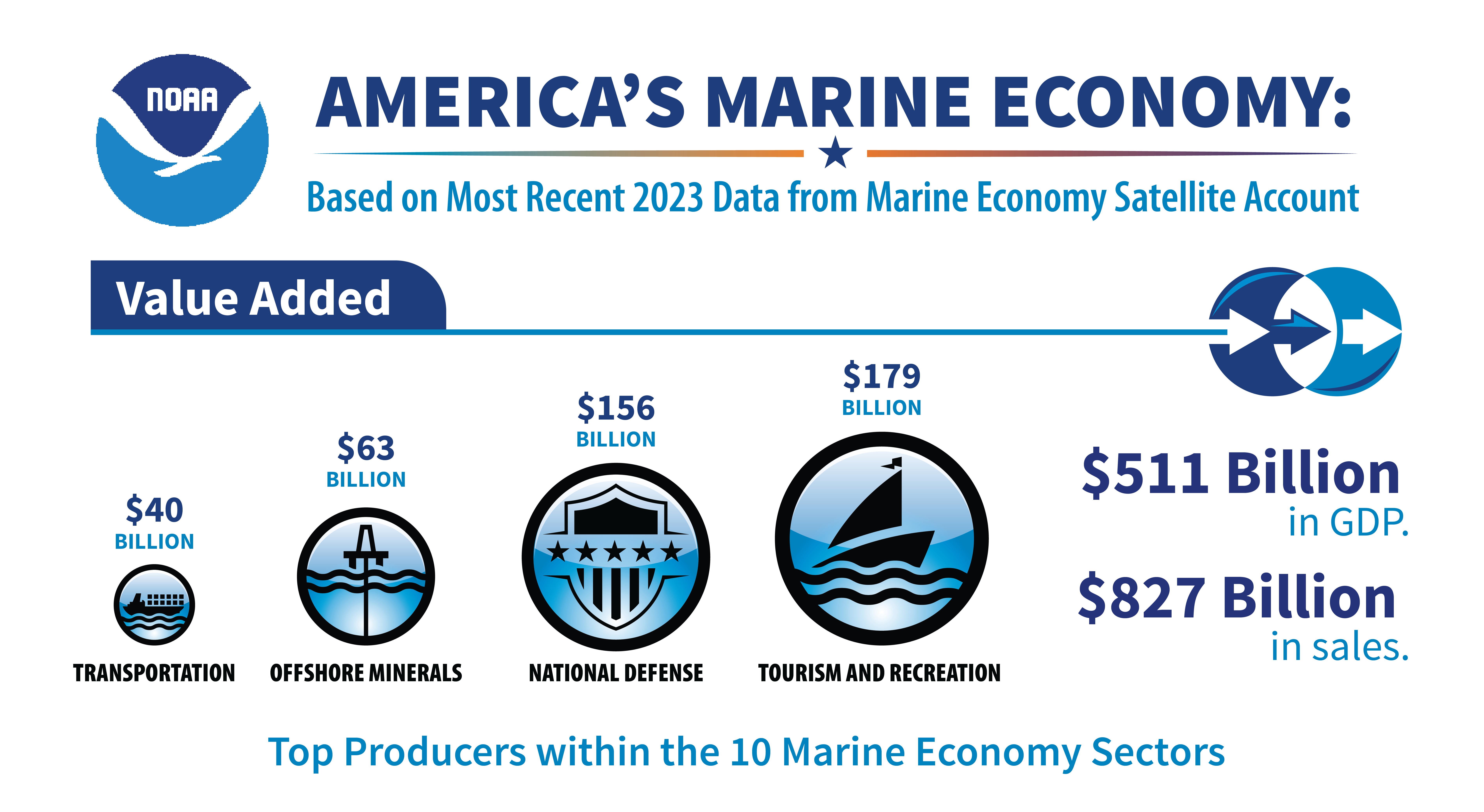Fast Facts / Marine Economy
Marine Economy
The term “marine jobs,” used below, covers the U.S. oceans and Great Lakes and is based on the most recent data available (2021) from the Marine Economy Satellite Account data set, a joint project between NOAA and the U.S. Bureau of Economic Analysis.
2.3 Million Jobs
The marine sector provides 2.3 million jobs annually.
$432 Billion in Goods and Services
Annually, the marine economy contributes $432 billion in gross domestic product.
$730 Billion in Sales
In 2021, the marine economy produced $730 billion in sales—significantly more than arts, entertainment and recreation, utilities, or data processing and internet publishing.
Impressive Growth
In 2021, the marine economy saw a 7.4 percent growth in its contribution to GDP and a 10.5 percent increase in sales. In comparison, the national economy grew by 5.9 percent and saw a 6.2 percent increase in sales. The tourism and recreation sector exhibited the largest growth, increasing by 27.3 percent, or $49.8 billion.
Good-Paying Jobs
Private marine industries with some of the highest paid jobs include mining (average $167,000 annually); utilities (average $150,000 annually); professional and business services (average $115,000 annually); information (average $111,000 annually); and finance, insurance, real estate, rental, and leasing (average $104,000 annually). In comparison, the average annual salary within the marine economy is $81,000.
Value Added
The following list demonstrates the annual gross domestic product (value added) for the 10 marine sectors:
- Tourism and recreation – $153 billion
- National defense and public administration – $140 billion
- Offshore minerals – $57 billion
- Transportation and warehousing – $28 billion
- Living resources – $18 billion
- Ship and boat building – $10 billion
- Utilities – $10 billion
- Research and education – $6 billion
- Construction – $5 billion
- Professional and technical services – $4 billion

Handout: America's Marine Economy
Data Source: Marine Economy Statistics. The 2021 status is measured by current dollar values unless otherwise noted; the growth values from 2020 are in chained (2014) dollars that have been adjusted for inflation. For marine economy statistics on a state and county level, see the ENOW database.